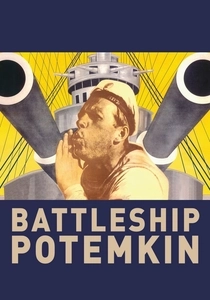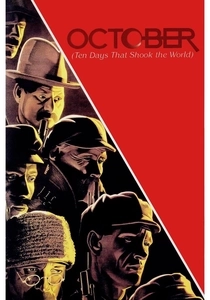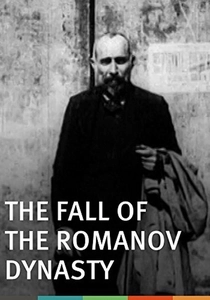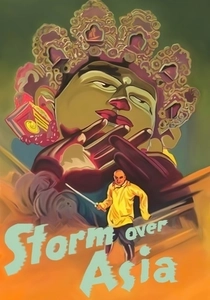- Battleship Potemkin (1925)
- The Extraordinary Adventures of Mr. West in the Land of the Bolsheviks (1924)
- October: Ten Days That Shook the World (1928)
- The Fall of the Romanov Dynasty (1927)
- Storm Over Asia (1928)
- The End of St. Petersburg (1927)
- Aelita (1924)
- The House on Trubnaya (1928)
- The New Babylon (1929)
- The Return of Vasili Bortnikov (1953)
Dive into the cinematic world of early 20th-century Russia through these 10 Soviet films. These movies not only provide a glimpse into the historical and cultural landscape of the time but also showcase the evolution of Soviet filmmaking. From revolutionary fervor to the quiet moments of everyday life, these films offer a unique perspective on a pivotal era in history.

Battleship Potemkin (1925)
Description: This silent film by Sergei Eisenstein is a landmark in Soviet cinema, depicting the 1905 mutiny on the Russian battleship Potemkin. Its innovative montage techniques and the famous "Odessa Steps" sequence make it a must-watch for understanding the revolutionary spirit of the era.
Fact: The film was banned in several countries due to its revolutionary content. It was also voted the greatest film of all time at the Brussels World's Fair in
 Watch Now
Watch Now 
The Extraordinary Adventures of Mr. West in the Land of the Bolsheviks (1924)
Description: This silent comedy by Lev Kuleshov satirizes the Western view of Soviet Russia. It follows an American businessman who travels to Russia to find his missing son, encountering various comedic misadventures.
Fact: The film was one of the first Soviet films to be shown in the United States, where it was well-received for its humor and depiction of Soviet life.
 Watch Now
Watch Now 
October: Ten Days That Shook the World (1928)
Description: Another masterpiece by Eisenstein, this film chronicles the events leading up to and including the October Revolution of 1917. Its portrayal of the storming of the Winter Palace is both dramatic and historically significant.
Fact: The film was originally intended to be part of a trilogy, but only two parts were completed. It was also heavily censored by Soviet authorities.
 Watch Now
Watch Now 
The Fall of the Romanov Dynasty (1927)
Description: A documentary-style film by Esfir Shub, it uses archival footage to depict the last years of the Romanov family and the events leading to the Russian Revolution. It's a historical montage that provides context to the revolutionary films of the era.
Fact: This film was one of the first to use the technique of montage to tell a historical narrative, influencing future documentary filmmaking.
 30 Days Free
30 Days Free 
Storm Over Asia (1928)
Description: Vsevolod Pudovkin's epic about a Mongol trapper who becomes a revolutionary leader against British colonial forces in Mongolia. It's a powerful narrative on imperialism and resistance.
Fact: The film was shot in Mongolia, providing authentic locations and a realistic portrayal of the region's culture and landscape.
 30 Days Free
30 Days Free 
The End of St. Petersburg (1927)
Description: Directed by Vsevolod Pudovkin, this film captures the transformation of a simple peasant into a revolutionary during World War I and the subsequent revolution. It's a poignant look at the impact of war and revolution on ordinary lives.
Fact: The film was made to celebrate the 10th anniversary of the October Revolution. It was also one of the first Soviet films to be shown internationally.
 30 Days Free
30 Days Free 
Aelita (1924)
Description: Directed by Yakov Protazanov, this sci-fi film tells the story of an engineer who dreams of traveling to Mars, where he meets Aelita, the queen of Mars, and becomes involved in a Martian revolution. It's a fascinating blend of science fiction and political allegory.
Fact: The film was inspired by Alexei Tolstoy's novel "Aelita." It was one of the first Soviet films to use special effects, including the depiction of space travel.
 30 Days Free
30 Days Free 
The House on Trubnaya (1928)
Description: Boris Barnet's comedy about a young woman from the countryside who moves to Moscow and navigates the complexities of urban life. It's a light-hearted look at the cultural clash between rural and urban Russia during the early Soviet era.
Fact: The film was one of the first Soviet comedies to gain international recognition, showcasing the lighter side of Soviet life.
 30 Days Free
30 Days Free 
The New Babylon (1929)
Description: Directed by Grigori Kozintsev and Leonid Trauberg, this film explores the Paris Commune of 1871 through the eyes of a shop assistant and a soldier, highlighting the class struggle and revolutionary fervor.
Fact: The film was one of the first Soviet films to use sound, though it was released as a silent film due to technical issues.
 30 Days Free
30 Days Free 
The Return of Vasili Bortnikov (1953)
Description: This film by Vsevolod Pudovkin tells the story of a peasant who returns to his village after years of wandering, only to find it transformed by the Soviet collectivization. It's a poignant look at the changes in rural life during the early Soviet period.
Fact: The film was one of Pudovkin's last works, reflecting his continued interest in the lives of ordinary people amidst significant historical changes.
 30 Days Free
30 Days Free 








